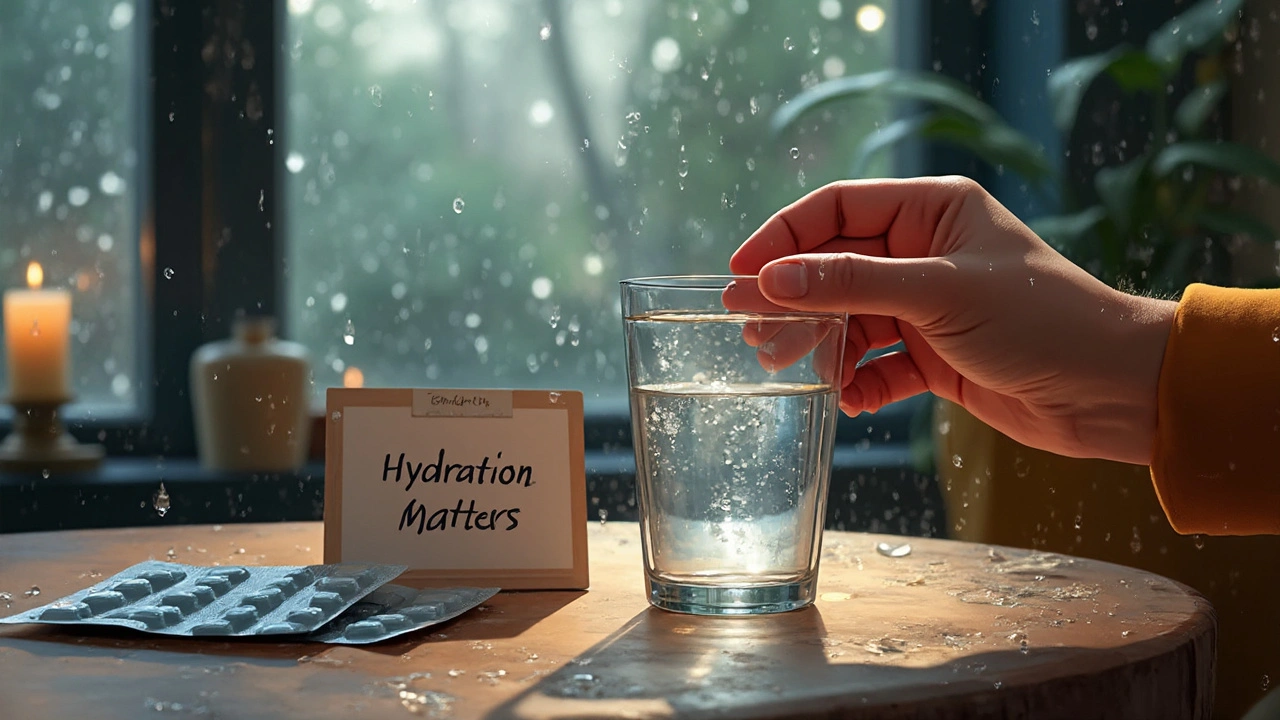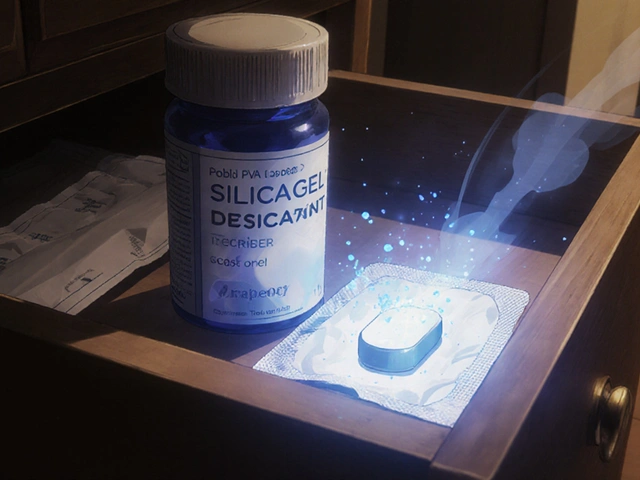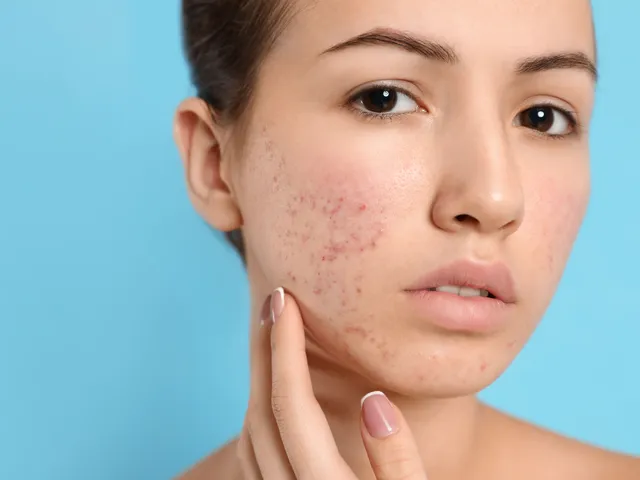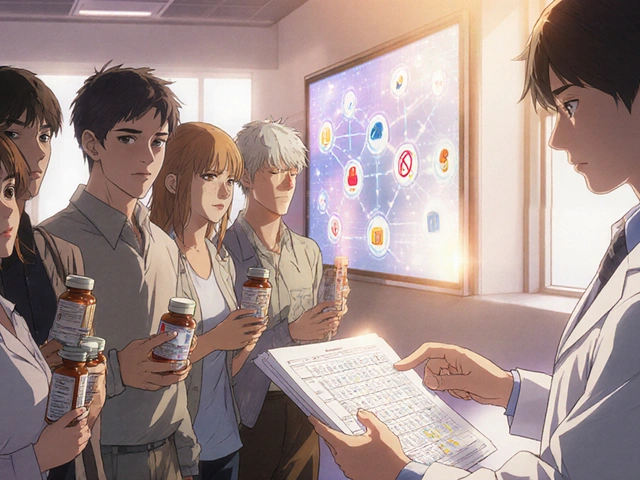If you’re fighting acne with spironolactone and scrolling through memes at your favorite bar, you’re basically a modern-day multitasker. The dilemma: should you join your friends for another drink or play it safe because of your prescription? Let’s be real—there’s a lot of confusion about mixing acne meds like spironolactone with alcohol. Docs sometimes give that cryptic “it’s not recommended,” but who spells out what actually happens, or how to play smart when you want to sip socially and not end up paying for it in the bathroom or with your complexion?
How Spironolactone Works (and Why Alcohol Messes With It)
Spironolactone isn’t just an acne magic pill. It’s a diuretic, meaning it tells your body to ditch excess water and salt—doctors mainly hand it out for high blood pressure, heart failure, and stubborn hormonal acne. For anyone with acne, spironolactone keeps androgens (those oil-spiking hormones) quieter, so your pores chill out. But, when you throw alcohol into the mix, you’ve got some extra drama. Why? Both alcohol and spironolactone tell your kidneys to flush more often. More trips to the bathroom mean dehydration sneaks up faster—cue headaches, dizziness, and skin feeling like the Sahara.
Another hot tip: spironolactone can drop your blood pressure. Alcohol? Same trick. Put them together and you could feel lightheaded, woozy, or straight-up tipsy after just a glass of wine. People on this med sometimes end up with potassium levels getting too high, which can mess with your heart. Mix in lots of drinks (especially things like beer or coconut water that have potassium), and the odds of running into a problem jump up. The funny part is most of us don’t even realize it’s happening until we feel weird.
If you want hard numbers, here’s a quick reference:
| Affect | Spironolactone | Alcohol | Together |
|---|---|---|---|
| Dehydration risk | Moderate | High | Very High |
| Lowered blood pressure | Yes | Yes | Stronger together |
| Potassium spike risk | Moderate | Low/None | Possible issue |
| Liver stress | Minimal | High | High |
The real trick? Most folks tolerate a little bit, but binge drinking or “power hours” can knock you off balance faster than your meds alone. The more you mix, the more your body has to juggle.
Pacing Your Drinks & Setting Limits
Imagine you’re out with friends, and the drinks keep coming. Here’s where knowing your pace is next-level important. The golden rule with spironolactone is: drink slower and start with less. Stick to no more than a standard drink an hour. For reference, that’s a shot (1.5 oz. liquor), a glass of wine (5 oz.), or a regular beer (12 oz.). Anything more and you risk multiplying side effects, not just a slightly worse hangover.
Don’t fall for the “I’ll just chug water later” trick. Spironolactone continues working for hours. Space your drinks, blend them with water (one drink, one glass of water), and set a two-drink max for the night until you know exactly how your body handles it. Friends pushing for shots? Say you’re watching your health on a prescription—people respect directness more than you might think.
If you’re new to the med, give your body at least two weeks before you have any alcohol. That’s when the first wave of side effects shows up if they’re going to happen. Check for weird dizziness, sudden fatigue, heart or muscle cramps after one drink—your body’s telling you it’s time to call it. Don’t get cocky if you handle one happy hour fine; stress, lack of food, or a new brand of booze can mess with everything. The unpredictability is real.
Another tip: skip cocktails with high-potassium mixers like orange juice, tomato juice, and coconut water. They’ll crank up your potassium levels. Spirits like vodka or gin with plain soda water are safer bets. Beer and wine are a bit trickier, since they have more volume (and carbs), meaning you may have to hit the restroom more often—which, again, can mean dehydration.
If you’re aiming to keep breakouts away, alcohol can still sting: sugary mixers, happy hour fries, and late-night pizza all add to skin drama. So, stick to lighter snacks, avoid greasy foods, and stay conscious of what you’re feeding your face while you drink.

Hydration Hacking: Outsmarting Dryness & Dizziness
Let’s talk about hydration. The most underrated weapon in your spironolactone arsenal is basic, boring water. It’s not a myth: every alcoholic drink works against your hydration, and so does your medication. For each drink, toss back a full glass of water before the next round. If you start with one, keep that bottle visible—constant reminders work way better than good intentions.
Some people flavor their water with a squeeze of lemon or a splash of cranberry (but don’t go overboard if you’re worried about kidney stones). Electrolyte powders can help, as long as they’re not full of extra potassium—check the label first. If you notice muscle cramps, sluggishness, or headaches, there’s your warning sign: you’re likely dehydrated. Don’t brush it off and keep going; call it a night, load up on water, and eat something salty when you can.
Pro tip: stick to clear liquids during happy hour. You can see how much you’re drinking, and your body handles them a bit better. Avoid caffeinated mixers—caffeine plus alcohol plus spironolactone is a triple whammy for dehydration and spikes the risk for feeling anxious or jittery. If you’re near a bathroom, use it—don’t hold it in, since you need your kidneys happy.
Monitor your weight the next morning. If you’re two pounds lighter, you probably lost more fluid than you should have. That’s your cue to skip alcohol for a few days, let your body catch up, and give your medication a fighting chance. If you’re not peeing much or if your pee is dark, chug water until things look clear. The old “eight glasses a day” rule is only a starting point—when you’re mixing diuretics and booze, you may need more.
Side Effects to Watch Out For—and When to Call It
Okay, so you’re playing by the rules and still wondering: what’s the worst that can actually happen? Spironolactone plus alcohol isn’t a guaranteed train wreck, but when side effects crop up, they’re not subtle. First, dizziness can hit hard and fast. If you stand up and the room wobbles, sit down and don’t risk the stairs. Sometimes, people notice extra fatigue, nausea, or heart palpitations after a couple drinks—none of these are badges of honor.
Watch out for muscle weakness or cramps. High potassium’s sneaky like that. If you notice any tingling, irregular heartbeats, or chest discomfort, don’t brush it off—call your doc or hit urgent care. Bathroom breaks getting weird? Less output or dark, smelly pee can signal dehydration or kidney stress. If hangovers get nastier or you feel off for days after drinking, your combination probably isn’t working—dial down the drinking or switch up your routine.
Want the real scoop? Experts have studied the effects of combining these, and while there’s no “forbidden” sign on the bar, it does ramp up risk. Accidents from fainting or falls are more common. A key thing: your skin might flare up after heavy drinking (even if you’re on spirono), so if acne comes back with a vengeance, that’s your clue to keep things lighter.
If you need a one-stop cheat sheet, the drinking alcohol while on spironolactone guide gives more details and straight answers. Plug into support groups or clinics if you’ve got more complicated health issues—honestly, it’s not worth risking your long-term health for a single night’s fun.
Bottom line: spironolactone and happy hour can coexist—if you’re smart about it. Prioritize water, respect your body’s signals, and don’t treat warnings as dares. Your skin, your weekend plans, and your future self will thank you.





While the article provides a thorough overview of spironolactone’s interaction with alcohol, it neglects to address the pharmacokinetic variability among different ethnic groups, particularly South Asian populations. The assertion that “standard drink limits” apply universally overlooks genetic polymorphisms affecting CYP450 metabolism. Moreover, the recommendation to avoid high‑potassium mixers fails to consider dietary potassium intake in regions where banana consumption is prevalent. A more nuanced approach would involve individualized monitoring of serum potassium rather than blanket avoidance. Finally, the piece could benefit from citing peer‑reviewed studies rather than relying on anecdotal observations.
Thank you for sharing such a comprehensive guide. It is essential that we approach this topic with both scientific rigor and cultural sensitivity, ensuring that readers from diverse backgrounds feel included. 😊 Please remember that moderation is key, and staying hydrated can mitigate many of the side effects discussed. 🌟 Should you have any further questions, do not hesitate to reach out to a healthcare professional.
Oh sure, just follow the “two‑drink max” and everything will be rainbows and unicorns, right? 😏 In reality, Big Pharma and the booze industry collude to keep us in the dark about the subtle neuro‑chemical sabotage that occurs when you mix diuretics with ethanol. 👀 If you’re not feeling a buzz after a single beer, maybe you’re being subtly dosage‑controlled. Remember, the only real safety net is to never trust the label. 🙃
lol thx but i think its overkill 😂
Great points all around! I’d add that staying consistent with your water intake not only helps with dehydration but also keeps your skin clear. If you notice any dizziness, pause and reassess your drinking speed. Keep encouraging your friends to respect each other’s health choices – it builds a stronger, healthier community.
Allow me to paint a vivid tableau for those daring enough to tread the fine line between dermatological triumph and nocturnal revelry. Imagine, if you will, the night sky as a shimmering tapestry of possibilities, each star a potential drink, each sip a promise of fleeting euphoria. Yet, beneath this celestial dance lies a tempest of physiological turbulence, a silent maelstrom where spironolactone, that steadfast guardian of hormonal balance, collides with ethanol’s mischievous spirit. The kidneys, those tireless custodians of fluid equilibrium, are summoned to a frantic ballet, their rhythmic contractions amplified to a feverish tempo. As the diuretic chorus crescendens, you find yourself making pilgrimages to the porcelain throne with a frequency that would make a marathon runner envious. Blood pressure, that delicate gauge of vascular serenity, begins to wobble like a tightrope artist in a gale, its readings descending into a realm of disquiet. Potassium, the quiet sentinel of cardiac rhythm, surges with an audacity that could awaken dormant arrhythmias, whispering warnings in the chambers of your heart. Each cocktail, though seemingly innocuous, becomes a catalyst, a rogue element that threatens to unravel the meticulously woven fabric of your skin’s recuperation. The acne lesions, once subdued, now sense the disturbance and rally like soldiers to a wounded flag, erupting in a resurgence of inflammation and oiliness. Your skin, that visible chronicle of internal chaos, mirrors the internal discord with redness, flares, and the dreaded post‑drinking breakout. Hydration, the oft‑overlooked hero, must be summoned in heroic measures-water, electrolyte‑balanced yet low in potassium, becomes your lifeline, a fountain of renewal amidst the desert of dehydration. The timing of each drink, the interspersion with water, the selection of low‑potassium mixers, all coalesce into a symphony of prudent consumption, a disciplined art form worthy of a maestro’s baton. Should you neglect these safeguards, the aftermath may manifest as dizziness, faintness, or a heart that stutters like an old engine. In the grand theatre of health, the decision to partake is not a simple flip of a coin but a calculated choreography, a dance of knowledge and restraint. Embrace the wisdom of measured indulgence, and your skin will thank you with a glow that outshines any fleeting buzz.
Wow, another epic novel about water and booze. 🙄 Guess we’re all supposed to be chemists now. If you’re reading this and still think “just one more drink” is harmless, good luck with that “healthy skin” fantasy. lol